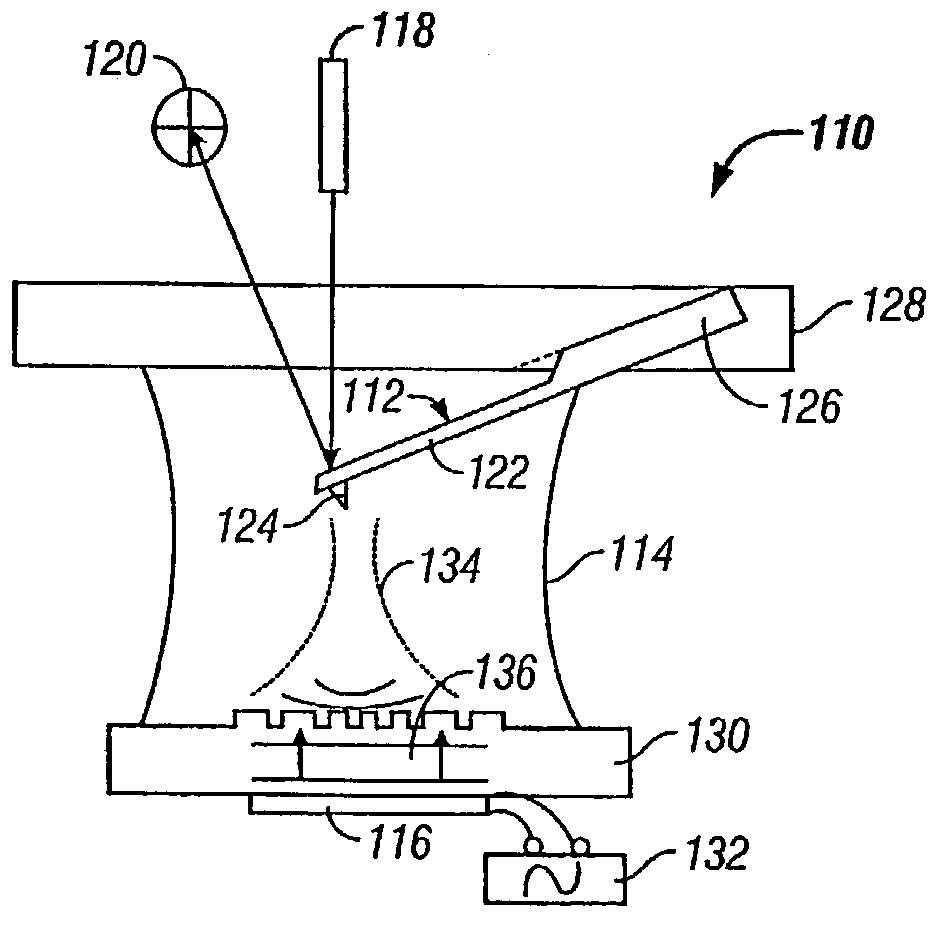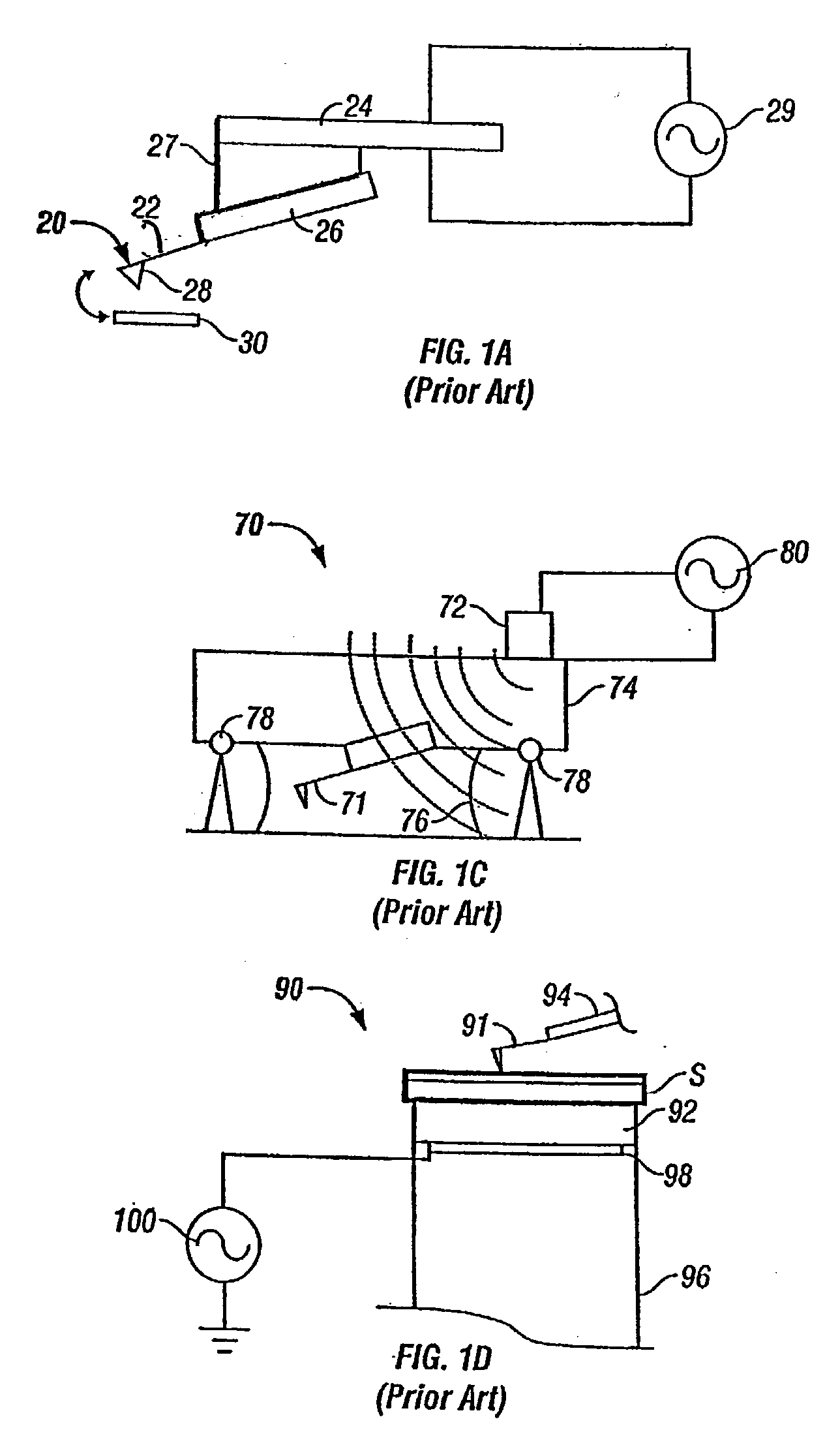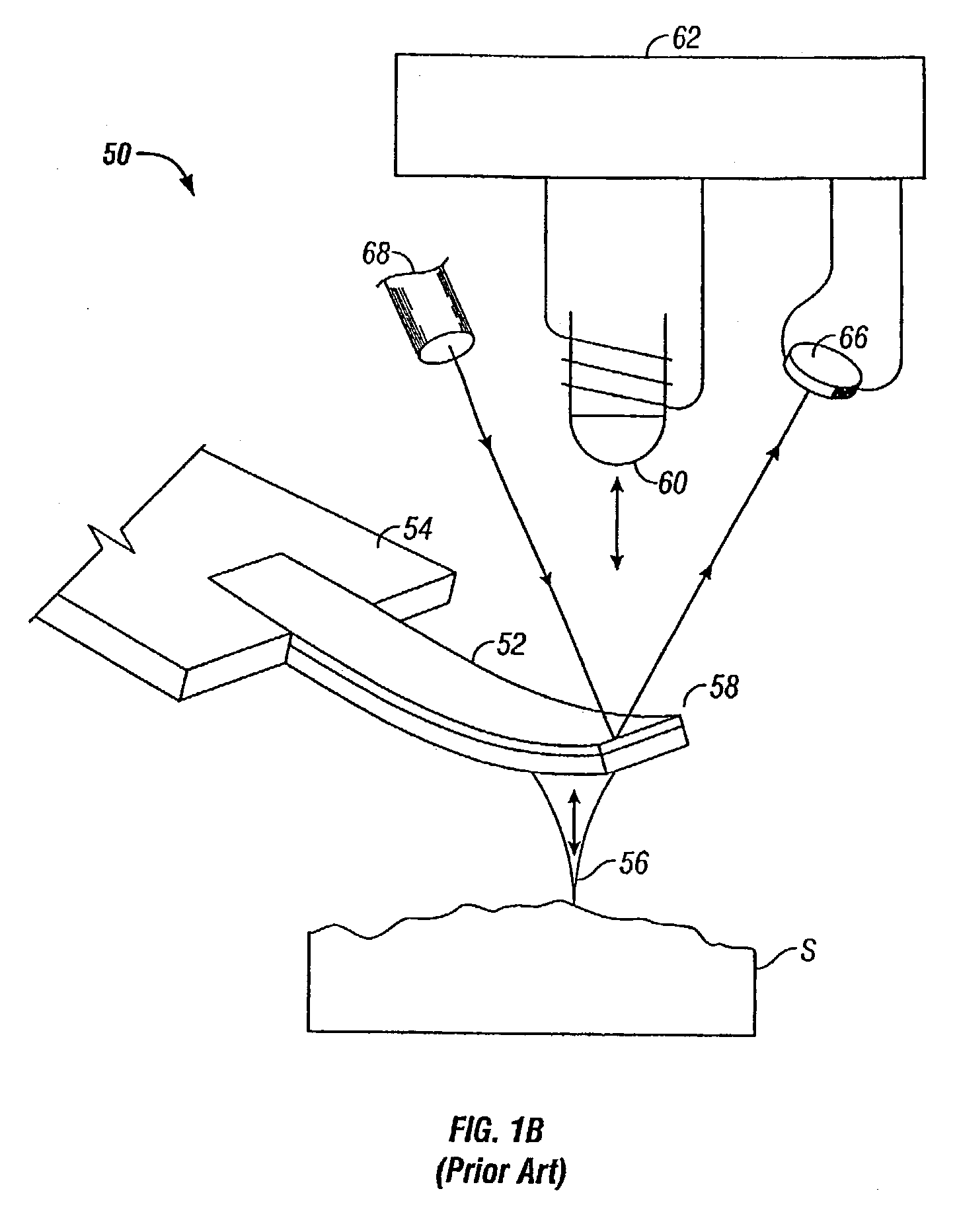Method and apparatus for the actuation of the cantilever of a probe-based instrument
a technology of probe-based instruments and cantilevers, which is applied in the direction of instruments, mechanical roughness/irregularity measurements, and reradiation, etc., can solve the problems of inefficiency, limitation of the range of applications of this common type of piezo-electrically-driven probe, and insufficient gain of typical piezo-electric drives to excite the cantilever
- Summary
- Abstract
- Description
- Claims
- Application Information
AI Technical Summary
Benefits of technology
Problems solved by technology
Method used
Image
Examples
Embodiment Construction
[0087] An ultrasonic actuator of the type described above can be used to drive an AFM cantilever to oscillate at virtually any desired frequency significantly below the RF carrier frequency. An ultrasonic actuator therefore can be directly used as TappingMode actuator in an AFM. A TappingMode AFM 210 using an ultrasonic actuator is shown schematically in FIG. 8. As with the more theoretical embodiment of FIG. 3B, the instrument 210 includes a conventional probe 212, an ultrasonic actuator 216, and a detector 220. The probe 212 is configured to operate in a fluid cell 214 containing a sample S. It includes a cantilever 222 having a base affixed to a support 226 and a free end bearing a tip 224. Also as in the embodiment of FIG. 3B, an ultrasonically transmissive substrate 230 is placed below the cantilever 222. A focusing device such as a Fresnel lens (not shown) may, if desired, be placed on or in the substrate 230. The ultrasonic actuator 216 is mounted on the bottom of the substra...
PUM
| Property | Measurement | Unit |
|---|---|---|
| frequency | aaaaa | aaaaa |
| frequency | aaaaa | aaaaa |
| frequency | aaaaa | aaaaa |
Abstract
Description
Claims
Application Information
 Login to View More
Login to View More - R&D
- Intellectual Property
- Life Sciences
- Materials
- Tech Scout
- Unparalleled Data Quality
- Higher Quality Content
- 60% Fewer Hallucinations
Browse by: Latest US Patents, China's latest patents, Technical Efficacy Thesaurus, Application Domain, Technology Topic, Popular Technical Reports.
© 2025 PatSnap. All rights reserved.Legal|Privacy policy|Modern Slavery Act Transparency Statement|Sitemap|About US| Contact US: help@patsnap.com



